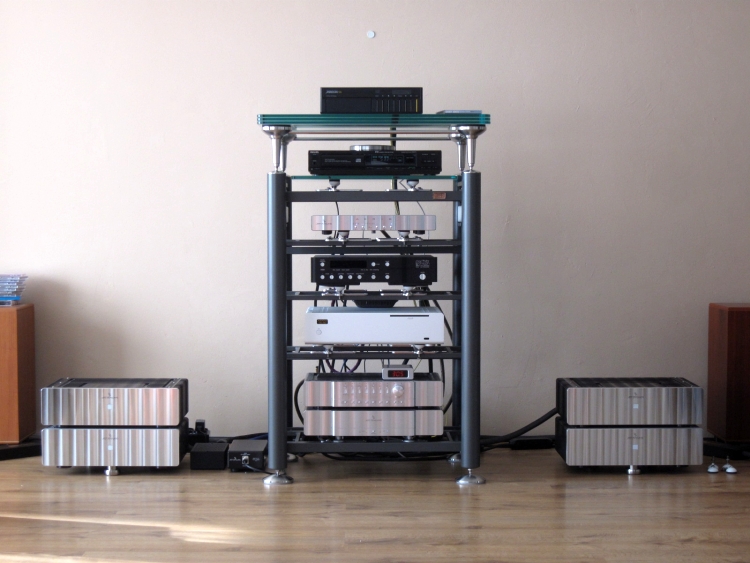
Just look at the pictures below: isn’t the Artesania Exoteryc audio rack a beautiful work of audio-art?
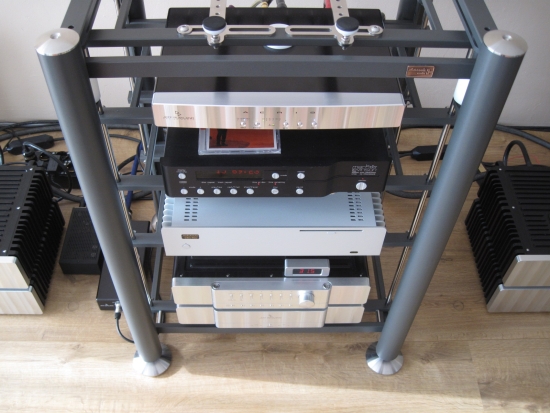
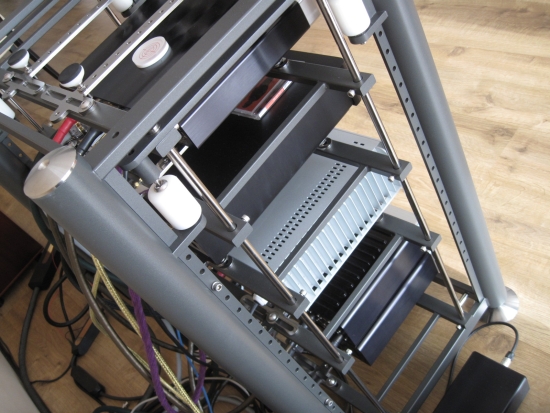
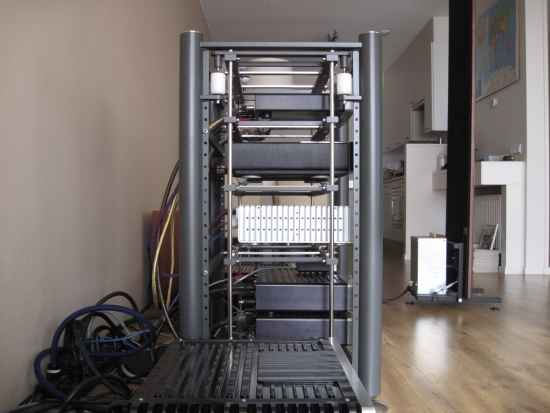
Final comments
The most important thing in audio is system synergy. Balance between components. No matter which component you buy, you will always have to take some effort bedding it in. It will rarely happen that you take out one component, plunge in another and everything is 100% better. The Artesania Exoteryc is no different. Even though it is better than the Spider rack in 90% of the areas, my system had been balanced with the Spider in place. This means that I have been compensating for its leanness and perhaps unknowingly also compensated for its forward midrange. It comes as no surprise then to find that the sound becomes a little out of balance after a huge change such as an equipment rack.
During the initial listening tests where the CD player was moved to the Artesania rack and the rest of the system was unchanged, there were only benefits. Adding the DAC also only added to that. But when the preamp was added, the sound tilted a little too much toward the smooth. Apparently, even though the Coherence II weighs 50KG, still it was influenced by the maximum swing effect offered by the Exoteryc’s lowest level. For most music this was beneficial but for more rhythmic-driven music, it was a little too relaxed.
But this was nothing a little cable-rolling couldn’t fix. After a lot of experimenting, what ultimately did the trick was a combination of mechanical and electrical tweaks. First I moved the feet under the CD player to the most outer position that the player would allow. Second I moved the powercable of the preamp from the Lapp extensionblock to the installationwire extensionblock, where the power amps already were. Lastly, I connected the supplied grounding wire to the top level at the one end and to the ground of the extensionblock at the other end.
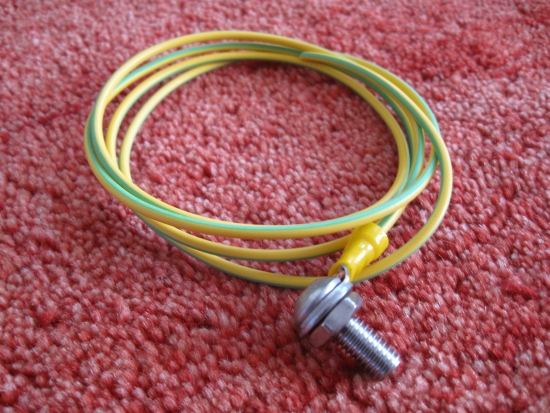
Grounding
That last thing really surprised me. I knew from a friend’s ungrounded system, that when we grounded it, we didn’t like the sound. Although it became technically better, we felt that the conveyance of emotion was lessened. Naturally, this is also all about system synergy. His system had been tweaked from the non-grounded starting point. In my case, the situation was different in that the sound was a little off balance at the starting point and grounding the rack made the sound shift right in position. Still, I was surprised by the amount of difference that grounding a rack can make. Perhaps a nice free tip for folks owning metal racks: try grounding it. You may or may not like the results, but I promise you that there will be a difference. How very cool that Artesania included it, too, or I might not even have tried it!
Update june 2013
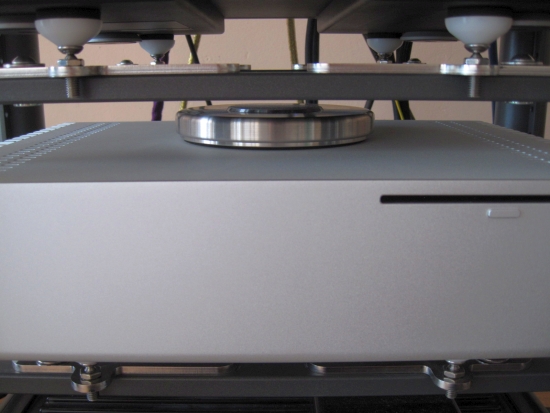
Using the Dampers
The package also includes a special damper for every level. I didn’t try them until later because my components are so solid and heavy already, especially the Rowlands, that I figured it unnecessary. However, as it turned out, the AAZ Ultra Flow music server could do with a little extra weight. Adding the damper on top made for more colour and fulness in the midrange where it was previously slightly thin. Its overall sound became less computer-esque and more like the Levinson CD player. In the process, rhythm is also slightly reduced but the server has plenty of that so as not to tilt the balance too much either side.
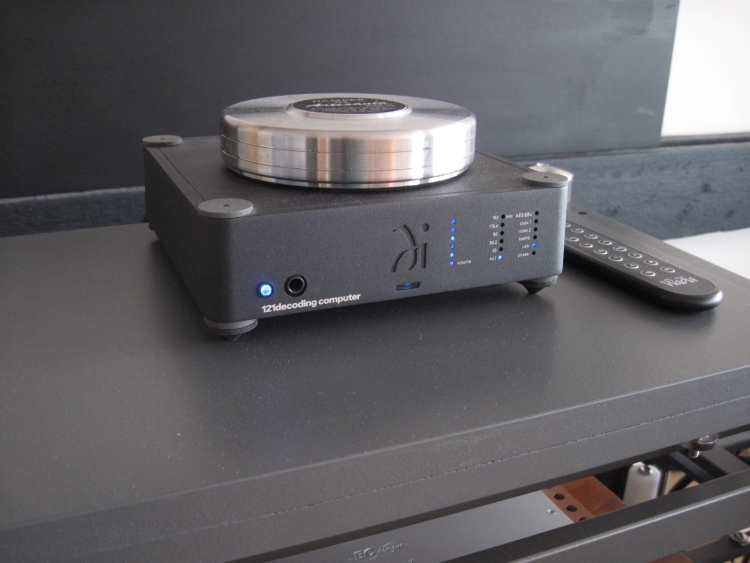
Various other components also work very well with a little extra weight on top: the lightweight Wadia 121 DAC springs to mind particularly. Not only does the weight prevent the unit from tipping over when connecting heavy cables but it also makes it sound fuller and more organic. The super heavy weights in turn work extremely well on top of the wood covers for the Apogee Diva speaker’s crossovers.
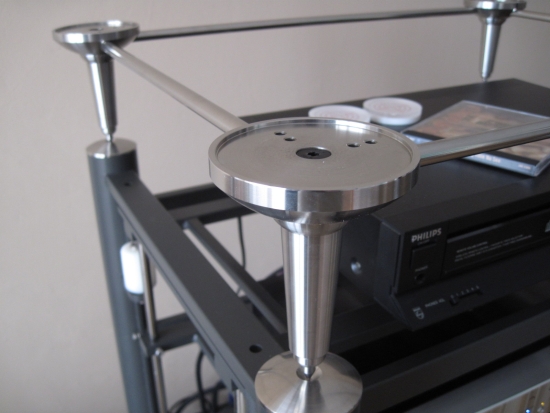
Optional Turntable Platform
Initially, I bought the rack without the optional Turntable Platform. I don’t have a turntable and figured that I wouldn’t need the space for anything else. But after some time and after looking at pictures of the complete rack, it started luring me and the thought occurred that it would be very convenient to have a large top shelf to arrange current CD’s on, or to put review components on. What’s more, visually I think the platform is stunning and really adds to the rack’s appeal. While maintaining its beautiful architectural qualities, I think the rack becomes even more majestic when the platform is included.
Like the rack, the platform isn’t cheap. But also like the rack, you get superb quality. The glass platter consists of three thick layers of glass, bonded by a rubbery substance. The glass platter alone weighs more than 40 kilograms! The steel construction fits perfectly and is fully adjustable: not only in height but also for each of the four cross bars, which are inserted into the standing pillars and fixed by two Allen screws which themselves are hidden from view under the black neoprene pads onto which the glass platter rests.
Forget mantras about glass being “ringy”, as the glass platter itself is so dense that it will definitely not ring. Slapping it with your knuckles produces only a low-key thud, much like it would if the platter were made from solid aluminum.
When assembled, the whole is super-sturdy and definitely won’t move from its position. It absolutely cannot accidentally be nudged off the rack.
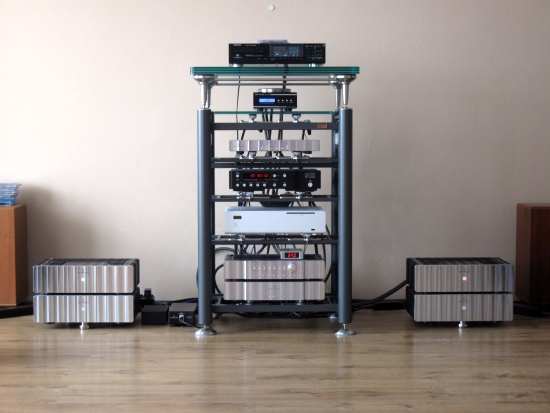
Listening with the Turntable Platform in place
Seeing as the rack itself has such an elaborate and well-thought-out system to eliminate vibrations and the turntable platform is coupled to the main pillars directly, it had to sound entirely different. And it does. I carried out a range of tests using various pieces of equipment. For this review I will focus on the use of the Meridian 506.24 CD player.
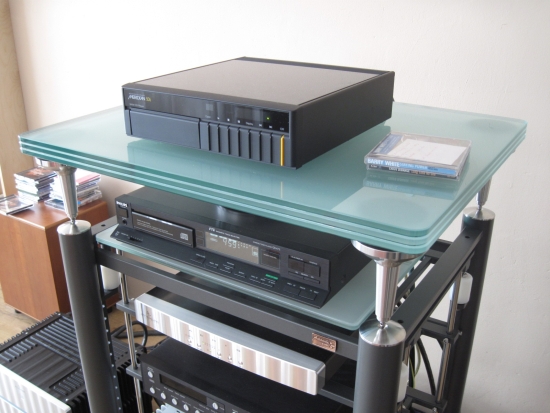
CD player on top of the Platform
As expected, the platform lends a different character to the sound than the suspended levels below it. On top of the glass platter, the Meridian’s bass is more pronounced and has more power, the midrange is more forward and more “live” and treble is more accentuated and drier. Although this presentation is not unpleasant, and actually welcome with hard-pounding basslines, the sense of richness through the midrange and the colorful, relaxed nature that the other levels of the rack lend to the music are reduced.
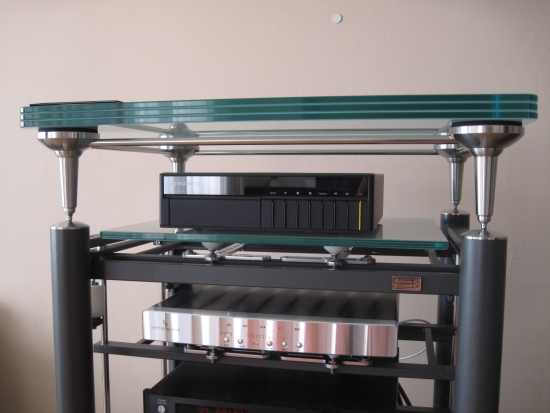
CD player on the smaller optional glass platter
This smaller glass platter is also optionally available and can be useful when you need to place very narrow components on a shelf, or placing two narrow units next to each other. Like the big platform, this platter consists of three layers sandwiched layers of glass albeit much thinner ones. Although lighter in weight, still this platter doesn’t ring when you knock on it. But in use, it does sound a little like what you’d expect a glass platter to sound like: extra articulate in the midbass and extra pronounced in the midrange, while treble is a little harder. But this phenomenon would later turn out to be triggered by standing waves caught between the two glass layer more than by the mechanical coupling of the component sitting on it, but more on that later.
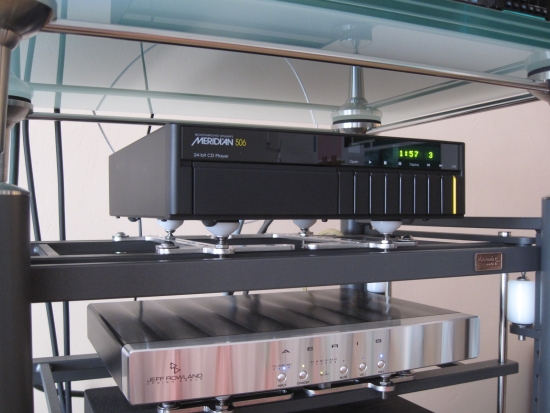
CD player on the rack’s own feet
With the platform still in place and the CD player placed on the rack’s own feet, the Meridian sounds best. Quite obviously a lot of thought has gone into the design of the rack and its suspension system and it just shows. Compared to sitting on the top level, the player now sounds a little less dynamic and pace is a little slower but the overall balance is much better. From the lowest bass to the highest treble the sound is just more complete and more harmonically rich. With some CD’s such as those from Groove Armada, the extra propulsion in the bass and lower midrange that the Turntable Platform added were very welcome but with most of my music I preferred the rack’s normal levels and its own feet. The smaller glass platform had a sound signature somewhere in-between. It had extra articulation through the bass and lower midrange but also still portrayed some of the rack’s inherent stability and calmness. Still, with the platter removed I found the balance to be better.
Glass platforms in place but without using them
As turned out eventually, adding the smaller glass platter to the rack with the Turntable Platter in place altered the sound, even when no component was placed on it. Most of the effects I noted above turned out to be attributable to the mere addition of the small glass platter. Removing it calmed down the forward midrange and hard treble and restored the more musically pleasant flow. Having the small platter in place but placing a component on top of it would dampen the midrange forwardness slightly but maintained the restriction of flow as the soundstage seemed to be compressed or tunneled between the two layers of glass. Out of curiosity I removed the small glass platform and substituted it with a wood panel. Surprisingly, this had almost the same effect as the glass platter, but the added coloration focussed on a lower frequency. It wasn’t better or worse, just different.
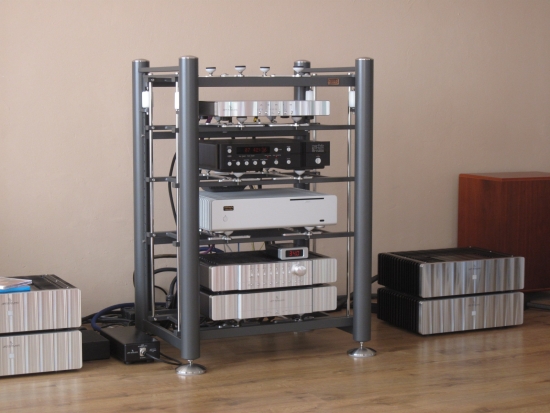
Removing the Turntable Platform
Now that I knew what the removal of the small glass platform did, I had no choice but to try the same with the big one. indeed again this made a difference and I am sorry to say that I preferred the sound without it. I hadn’t noticed when installing it but upon removing it I noticed how the sound relaxed and the stage breathed more freely. Interestingly missing went a sense of focus in the midrange, with snares now having less attack and bite. But overall I prefer the more natural sound that the rack provides without platters in place.
After all, it isn’t surprising that the glass platform influences the sound because it bypasses the rack’s inherent design, which is to prevent the use of shelves. I liked the Spider racks for their absence of coloration and the same is true for the Artesania rack. Adding platforms to the design seems to undermine their design. I do think however that the effect I heard was greatly increased by the height of the rack and the fact that it is situated between the speakers. Even if the speakers are setup almost two meters from the rear wall, the fact that they are dipoles probably also has something to do with this.
Then again, with a lower version of the Exoteryc rack or when the rack was setup next to one of the side walls in the listening room, the addition of either glass platforms probably wouldn’t have the same effects as in my setup. Either way, even though it looks stunning, adding the turntable platform turns out to influence the sound in my particular setup in such a manner that I prefer the rack without it.
Conclusion
The Artesania Exoteryc is quite simply the best audio rack that I have used. Not only is it flawless in design and adjustability; soundwise it is also perfect and a massive improvement over any rack that I have used. It takes the best qualities of Finite Elemente’s Spider Rack and adds tonal richness, better low-level resolution, deeper black, a more solid soundstage with better focus, deeper, more powerful bass and a superbly natural sound. And it does all this while retaining treble fluidity and airiness, overall articulation and dynamic expression.
The rack doesn’t hide its highly technical nature, but I perceive it as a classic case of “Form Follows Function”. This rack is just really well thought out and I personally think it looks spectacular. But more importantly, the added emotionality that this rack is able to squeeze out of my system is quite simply staggering.

Read Also
Artesania Exoteryc 3-shelf version
Artesania Turntable Platforms and Dampers
Artesania Aire Floor Platform
Various Artesania Footers tested with SolidTech Radius racks
Artesania Modular Floor Platform
Artesania Modular Rack
External Links
Manufacturer: Artesania Audio
Benelux distribution: Aspera Audio
Krion website: Krion.com/en

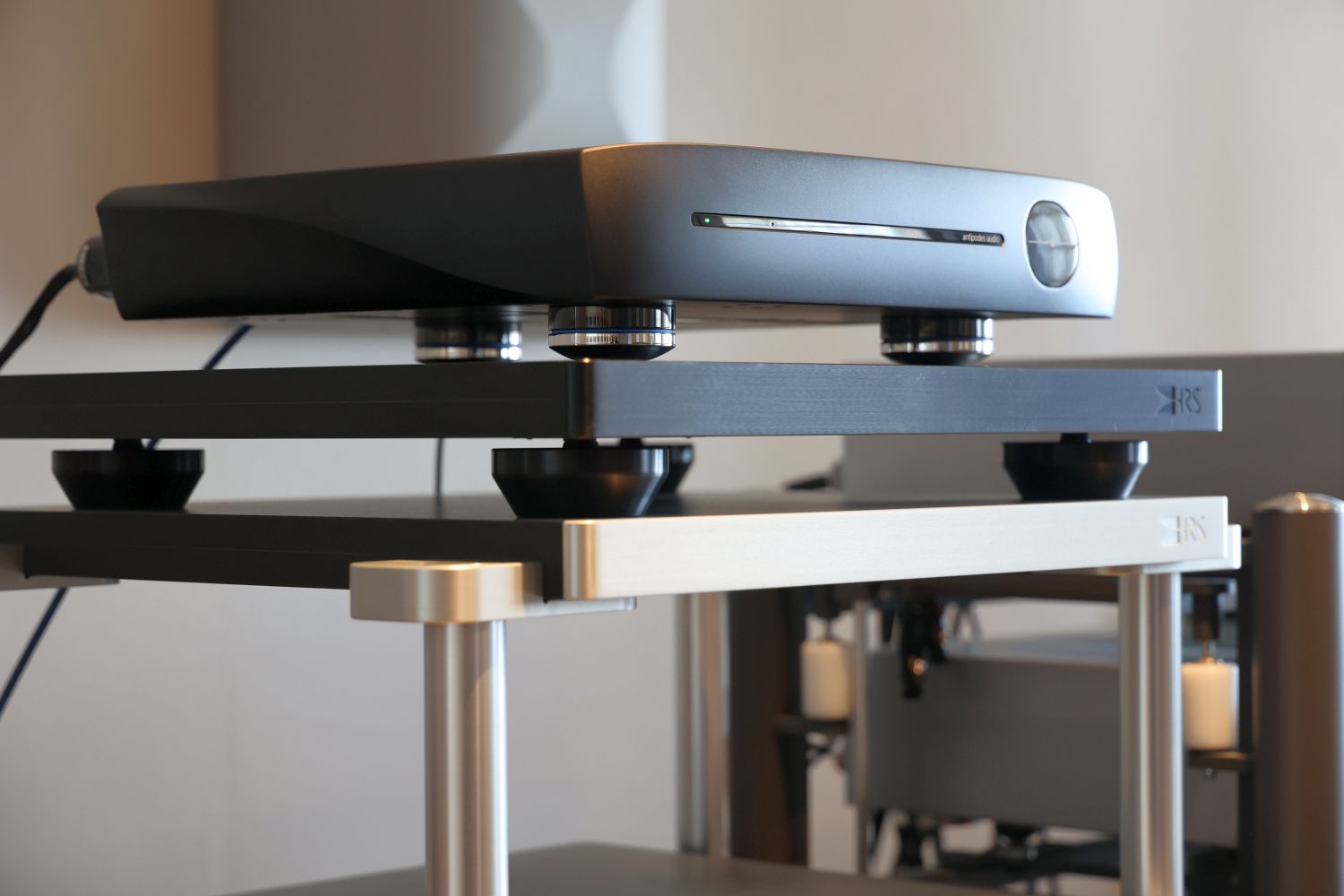


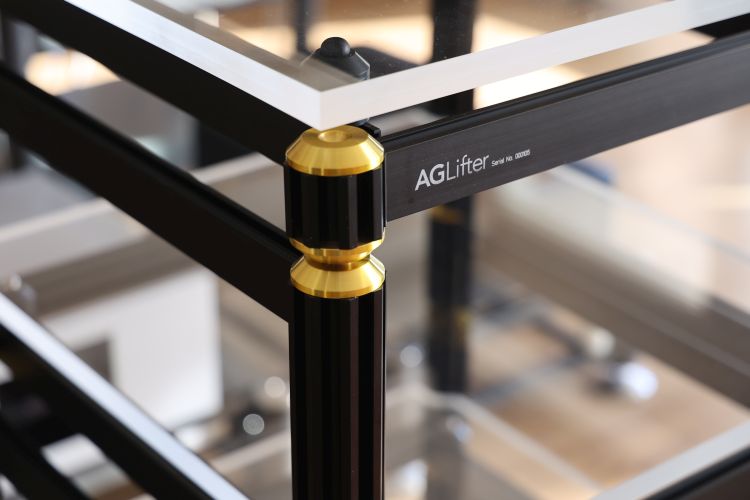
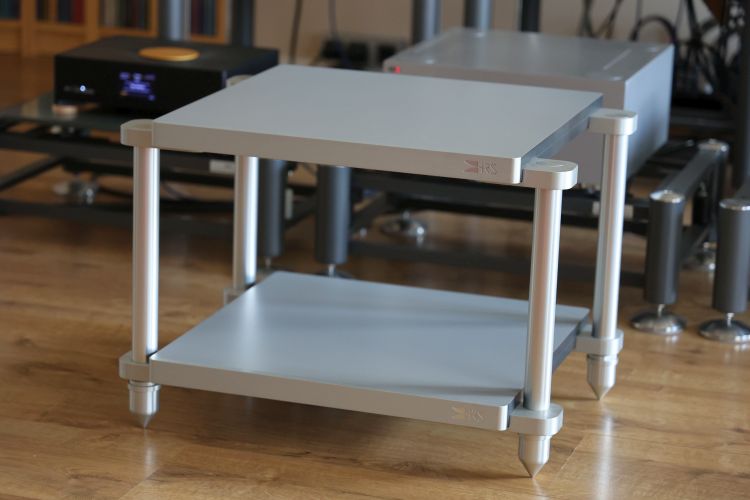
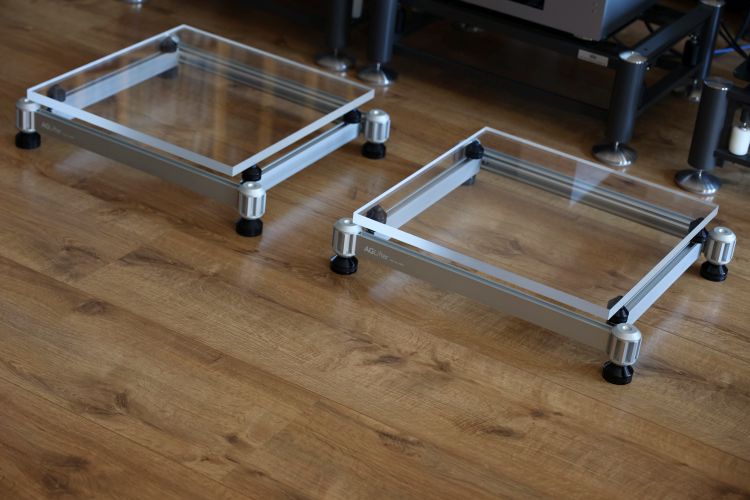
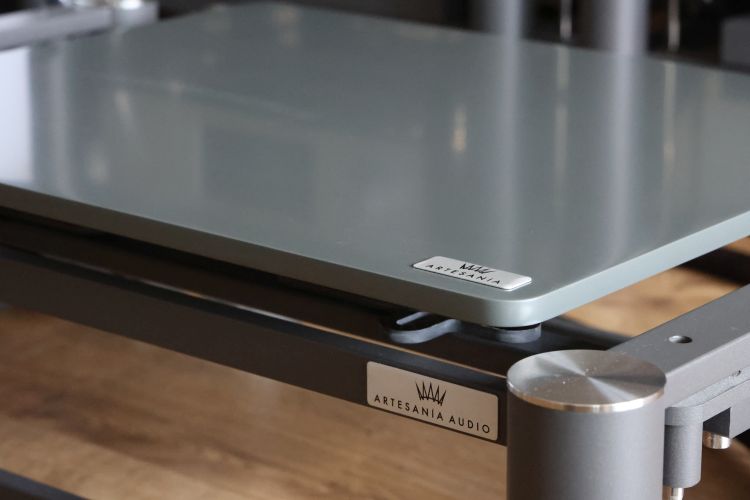
Hi Christiaan,
Can you compare this rack with the A Capella platforms?
Best, G.
Hi Christian, i see you placed the power supplies from rowland not into the rack, but on the ground. Are the power supplies on the ground not bad for the sound?
It does make a considerable difference but I wouldn’t say one is strictly better than the other. The main difference is that power supplies, when placed on the floor, tend to sound bassier and fuller whilst placement on a rack tends to make the sound faster and airier. In my case, I needed the extra body in my system at that time.